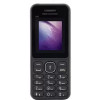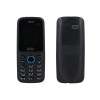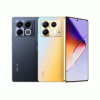
Let us take a look at the reasons behind BlackBerry's downfall from 'the most promising mobile phone company in the world' to a brand which no buyer wants to associate with:
PATENT SUIT

One of the first setbacks faced by RIM was getting embroiled in a patent litigation regarding mobile email against a patent troll firm named NTP. The company ended up paying over 600 million to NTP to settle the dispute.
THE iPhone

Apple began the transformation of the global telecommunications industry back in 2007 by introducing the iPhone. And the beginning of Blackberry's collapse too can be traced back to the arrival of the iPhone.
The iPhone affected BlackBerry in multiple ways. Here are the manifold ramifications of iPhone on Blackberry:
1. Change Of Definition Of A Mobile Phone
At the time the iPhone was unveiled, the prevailing sentiment was that cell phones are for communication. But the iPhone single-handedly changed the expectations from a mobile phone. Suddenly, people started treating smartphones as portable computers and calling and texting were no longer the primary functions. Now users could browse the net on their phones just like on a laptop. Entertainment options available on an iPhone were also on par with those on a computer.
Whereas Blackberry phones were strictly for business purposes. The company tried to pit its devices against the iPhone by emphasizing on their battery lives, physical keyboards, e-mail and messaging capabilities, and BlackBerry's secure servers. But consumers didn't care about these things anymore. They placed more importance on the overall utility of a smartphone. People wanted games, camera, apps, and internet browsing on their phones. iPhones provided all these. Blackberry couldn't.
2. Bring Your Own Device (BYOD)
Blackberry's major clients were corporates who bought BlackBerry devices for their workforce. BlackBerry phones ensured that their employees were always accessible by email and work got done faster. Also, BlackBerry servers were famous for how secure they were and companies wanted official communications to happen through BlackBerry handsets.
With the advent of the iPhone, the public was exposed to the recreational potential of a smartphone. For some time people used separate devices for their personal and professional needs. But soon, employees wanted companies to allow them to use iPhones at work. This sparked the Bring Your Own Device or BYOD trend. Now, workers were allowed to bring their iPhones to office. They were happier as they got to enjoy iPhones on the job and the employers saved money as they no longer had to spend money on BlackBerries. The fact that Apple kept strengthening the security of its servers also helped the iPhone's case.
Blackberry lost its major customer base – the corporations due to the BYOD phenomenon. Iphones had completely usurped the smartphone industry. Blackberry had failed to anticipate the change of smartphone from enterprise driven to customer driven.
3. Failed Attempts At Catching Up
As the iPhone had rewritten all the existing rules of the game, the incumbent players were left confused as to what their next move should be. BlackBerry released a touchscreen model named BlackBerry Storm in association with Verizon to counter the iPhone. This phone with its many glitches earned a lot of wrath from its users and caused a severe dent on the brand's image. Even the BlackBerry Playbook tab launched to challenge the iPad turned out to be a damp squib.
Devices like Storm and Playbook alienated both the loyalists and the prospective customers of BlackBerry. BlackBerry fans were disappointed that the company had moved onto touch screens and missed their beloved physical qwerty keypads while others found BlackBerry's touchscreens to be way inferior to those that were offered by brands like Apple and Motorola.
BLACKBERRY 10 OS AND Z10 DEBACLE – THE COMEBACK TRAGEDY

After iPhone, the next major step in the evolution of smartphones came in the form of the Android operating system from Google. Most manufacturers who wanted to survive in the smartphone market opted to incorporate the Android operating system in their handsets. The cheaper prices, variety of hardware, and customization capabilities of Android phones led to them emerging as alternatives to the iPhone. With the entry of Android, the smartphone revolution had reached full circle.
In the meanwhile, RIM was developing its own operating system to compete with behemoths like iOS and Android. Eventually, the operating system named BlackBerry 10 was revealed for the first time through the BlackBerry Z10 smartphone. The Z10 which was highly anticipated and came with great reviews failed to find users after good initial sales. Lots of units of the phone remained unsold just months after launch. While Blackberry's descent had begun soon after the dawn of the iPhone, Z10's failure made it clear that it was unlikely for the brand to regain its former dominant position.
The Z10 was too late to the party. It offered features which existing phones already had and that too at a high price. People saw no incentive in moving to a new operating system.
The co-founder of RIM Mike Lazaridis had warned the then CEO of RIM Thorsten Heins against launching a touchscreen phone (Z10) as opposed to launching a qwerty keypad phone which was what the company was most known for. The Z10 fiasco proved him right.
DEVELOPER GAP

Image credit: iconfinder.com/HartegJac
By the time BlackBerry10 was released, Android and iOS platforms had many third party apps. The BlackBerry10 wasn't able to offer as many apps. Also, the ones offered were of inferior quality. This caused a lot of customers of Z10 to move to other phones within weeks of purchasing Z10.
Developers weren't interested in creating apps for BlackBerry 10 operating system due to two main reasons:
1) BlackBerry 10 operating system wasn't used by many people. This meant lesser profits for developers.
2) The bureaucratic attitude of Blackberry. It was extremely difficult for developers to collaborate with BlackBerry.
The BlackBerry Z10 and subsequent Blackberry 10 operating system based models collapsed in the market mainly due to this developer gap.
CROSS PLATFORM BBM – DIDN'T SEIZE THE OPPORTUNITY

Former co-CEO of RIM Jim Balsillie had proposed that BBM (BlackBerry Messenger) be made available to users of other platforms like Android and iOS. But the company chose to focus on BB10 and Z10 instead and shelved Balsillie's idea. This led to Balsillie resigning from the company. After the washout of BlackBerry 10 and Z10, BBM was launched across platforms, but by then it was too late. Whatsapp had already captured the messenger market.
FORAY INTO ANDROID

The BB10 operating system never took off with models like BlackBerry Passport, BlackBerry Leap, and BlackBerry Classic flopping one after the other.
Finally, they decided to make android phones but high prices and lack of differentiation of models like BlackBerry Priv and BlackBerry DTEK50 led to them sinking without a trace.
Now the company has stopped handset production and has decided to concentrate only on software. As mentioned earlier, the BlackBerry KEYone is the last smartphone with hardware developed by the company.
Also see: Blackberry KEYone Launched In India As BlackBerry KEYone LIMITED EDITION BLACK

The KEYone is a great combination of a qwerty keypad and a touchscreen but it is too expensive. If you're a fan of the BlackBery brand, this is your last chance to grab an authentic BlackBerry smartphone.







